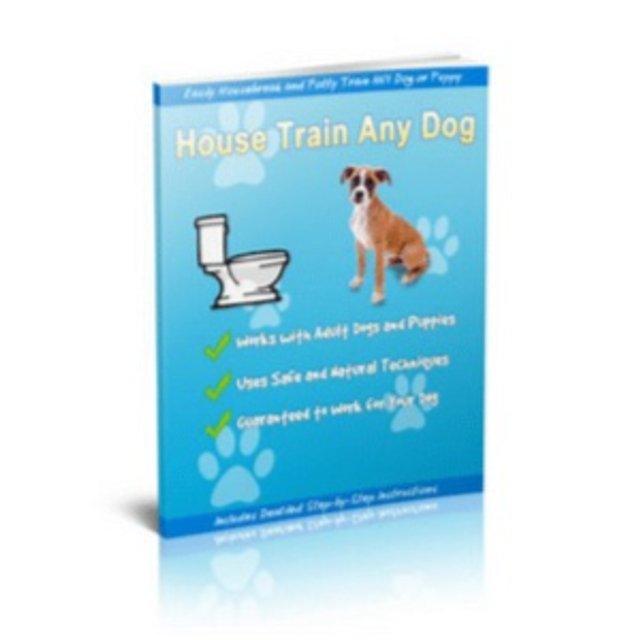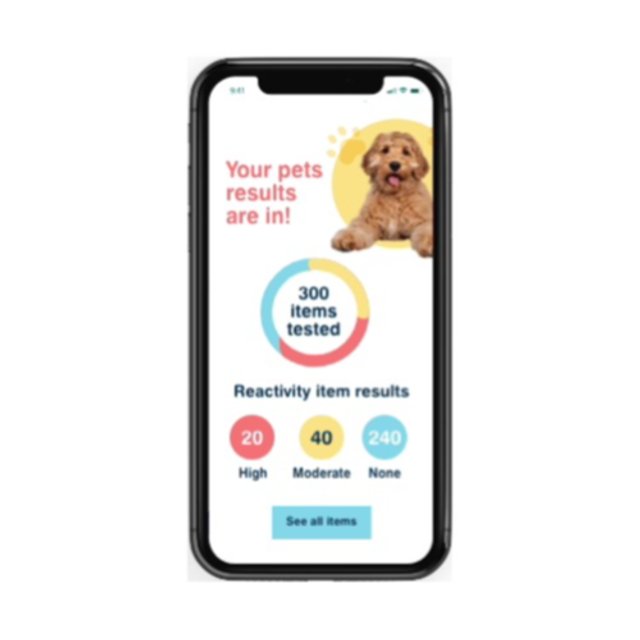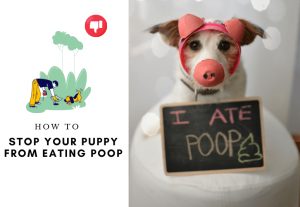Congratulations on your new puppy! Now that you have them, it’s time to teach them how to be a good dog. It’s never too early to start
In this guide, I’ll walk you through the process of
Can an 8 Week Old Puppy Be Potty Trained?
Yes, an 8-week-old puppy can be potty trained. The use of a crate is recommended as part of the training process, as puppies tend not to want to eliminate where they sleep. Taking the puppy outside frequently, such as after waking up, eating, drinking, and playing, can increase the chances of success. Reinforcing good behavior with rewards for successful elimination can also aid in the training process.
Potty training a puppy requires patience and consistency, as well as positive reinforcement when the pup successfully uses the designated elimination area. It is important to understand that puppies have limited control over their bladder and bowel movements, so the process should be done gradually.
Setting a routine can help the puppy learn where to go when they need to relieve themselves. This includes taking them out at regular intervals and praising them when they successfully do their business in the right place. If accidents occur, cleaning up without scolding or punishing the puppy is important as it can cause confusion and harm in the long run.
Keep reading as we’ll be sharing our step-by-step guide on how to house train your 8-week-old puppy in 15 easy steps.
How to Potty Train an 8 Week Old Puppy (15 Easy Steps)

Here’s a quick run-down of the 15 steps to toilet train your 8 week old puppy:
Step 1: Get a Crate
A crate is an essential tool for
Gradualy increase the amount of time the puppy spends in the crate, starting with just a few minutes at a time and working up to longer periods.
Step 2: Supervise The Puppy When Outside The Crate
Puppies have small bladders and need frequent potty breaks, so it’s important to supervise them closely when they’re outside of the crate. This will prevent accidents and allow you to catch the puppy in the act of going potty so you can immediately take them outside to the designated bathroom spot.
Step 3: Create a Routine
Establish a consistent feeding, playing, and sleeping schedule for the puppy. This will help them learn when they wil be taken outside to go potty.
Step 4: Pick a Bathroom Spot Outside
Choose an area in your yard or nearby where the puppy will consistently go potty. This will make it easier for them to understand where to go.
Step 5: Go Potty Outside (every 1-2 Hours)
Take the puppy out frequently, especially after meals, naps, and playtime. A good rule of thumb is to take the puppy out every 1-2 hours.
Step 6: Use a Leash and Collar
When taking the puppy outside, use a leash and collar to help control them and prevent them from wandering away. A good choice of a collar and leash is a flat collar with a 6-foot leash.
Step 7: Praise and Reward
When the puppy goes potty in the designated area, praise them and give them a treat to reinforce the behavior. Treats like the “Soup Bones dog treats with real Beef” are perfect for this purpose.
Step 8: Establish a Signal
Use a specific word or phrase, such as “go potty,” to signal to the puppy that it’s time to go outside to go potty.
Want to learn more about how to teach your dog to go potty on cue? Check out the American Kennel Club’s guide.
Step 9: Off-leash Fun Time After Pees and Poop
Give the puppy some supervised off-leash playtime after they have gone potty to help them associate going potty with positive experiences.
Step 10: Hang Potty Bells Near The Door
Hang a bell or other noise maker near the door that you use to take the puppy out to goo potty. Ringing the bell before going out will help the puppy learn to associate the sound with going potty. “Caldwell’s Potty Bells” is a great product that can be used for this purpose.
The sound of a tinkling bell is easy for dogs to connect with the act of going outside, so it makes sense that it would be a good way to let them know when they neeed to do their business.
Step 11: Keep Going Potty Outside
Gradually increase the amount of time between potty breaks, but don’t push the puppy too quickly.
Step 12: Always Take Your Puppy to The Same Spot
Consistently take the puppy to the same spot outside to go potty to help them learn to associate the spot with going potty.
Step 13: Deal With Accidents The Right Way
If the puppy has an accident inside, don’t scold them. Instead, simply clean it up using an enzymatic cleaner like “Simple Solution Extreme” and take them outside to the designated bathroom spot.
Step 14: Stay Consistent
Be consistent with your training approach and stick to the same routine every day. Consistency is key to success. Positive reinforcement, such as praising and treating the puppy when they go potty in the designated area, can also be effective in reinforcing the desired behavior.
Step 15: Repeat The Steps Throughout The Day
Potty training is a process and it will take time. Be patient and keep repeating the steps throughout the day until the puppy is fully trained.
In addition to these steps, it’s important to remember that puppies are not fully able to control their blader until around 6 months old. So it’s important to be patient and consistent and don’t expect too much too soon. Also, it’s important to remember that accidents will happen and to remain patient and consistent in your training approach.
In summary,
When a Puppy Is Considered Potty Trained?

When it comes to
It is important to note that training your puppy may take some time and patience.
Depending on the age of the puppy when you bring them home, as well as their individual personality,
Remember that consistency is key when teaching your puppy anything new, and with enough repetition and positive reinforcement, your pup will eventually understand where they need to go potty.
How Long Does It Take to Potty Train a Puppy?
Potty training a puppy is an essential aspect of being a new puppy owner. While it may seem challenging, it doesn’t have to be.
Typically, it takes 4-8 weeks to potty train a puppy, depending on the breed and temperament of your puppy. Every puppy is unique, so there isn’t one definitive answer when it comes to how long it will take to potty train an 8-week-old puppy. I have raised over a dozen puppies in my lifetime, and all of them have been potty trained within the 8-week period.
Some puppies may take longer than others, but with patience and consistency, you can successfully potty train your puppy in that time frame. Remember that having realistic expectations when it comes to training your puppy will make the process easier for both you and your pup!
Read more on our detailed guide about: How long does it take to house train a puppy with a crate
Potty Training Techniques

1. Using a Crate
Using a crate as a method to house train a pup is a simple and efficient way to achieve success. Crate training teaches puppies that they need to hold it until they are taken out to eliminate. This creates a specific space within your home where the pup can learn self-control.
Once your pup is comfortable in his crate , you can incorporate it into your
When he does, be sure to reward him with praise or treats. With patience and consistency, your pup will soon understand that eliminating outside is the preferred behavior over inside your home.
2. Using Puppy Potty Pads
Using puppy potty pads as a technique to potty train a puppy can be an effective and efficient way to teach your pup the skills necessary for
You can place them in specific areas of your home and allow your puppy time to get used to going there when they need to go. The pads also help contain accidents and make cleanup easier, as you can simply throw away soiled ones and replace them with new ones.
Plus, they’re usually scented to draw your puppy’s attention. With consistent reinforcement, your pup should have no problem learning where they are expected to go.
However, I personally believe that crate training is a better way to achieve faster results when
3. Positive Reinforcement (treats and Praise)
Positive reinforcement is an effective and popular technique for
To use positive reinforcement effectively, start by offering rewards immediately after your puppy eliminates in the appropriate spot. Provide verbal praise and give treats that appeal to your pup, such as small pieces of cooked chicken or hot dog slices.
Additionally, avoid punishing your puppy if he has an accident; instead, remain calm and redirect him to the right spot. When used correctly, positive reinforcement can be a great tool for
If you’re interested in learning more about positive reinforcement and how it can help you bond better with your dog, I suggest checking out this course. It goes into depth on how to use positive reinforcement to train your dog in various areas such as obedience, behavior modification, and more.
Not only is it a gentle and humane approach, but it also helps strengthen the relationship and trust between you and your furry friend. Give it a look and see how it can benefit you and your puppy.
4. Handling Accidents While potty Training a Puppy
When toilet training a puppy, accidents are inevitable. The best way to handle these accidents is to stay calm and use positive reinforcement. Immediately after the accident, clean it up using an enzymatic cleaner that will break down the odor-causing compounds in the urine or feces.
This will help discourage your pup from returning to that spot to urinate or defecate again.
When you catch your pup in the act of having an accident, provide a verbal cue such as “no” and immediately take them outside or to their designated potty spot. Once they have successfully gone, reward them with lots of praise and a treat.
Be patient with your pup and remember that it takes time for them to learn this new habit.
Factors That Can Affect The Toilet Training Process of a Puppy

Toilet training your puppy can be a challenging task, but with the right approach, it can be done with ease.
Here are several key factors to consider when toilet training your pup:
- Age: Keep in mind that younger puppies have limited bladder and bowel control, so be prepared to take them outside more frequently.
- Diet: What you feed your puppy can greatly impact their digestion and elimination habits, so make sure to provide them with a high-quality diet that agrees with their system.
- Scheduling: Consistency is key when
potty training your puppy. Creating a consistent schedule for meals , playtime, and potty breaks will help them understand when it’s appropriate to go. - Supervision: Keep a close eyee on your puppy at all times to prevent accidents from happening.
- Reinforcement: Utilize positive reinforcement to encourage good behavior and discourage bad behavior.
- Consistency: Using the sam command words and signs each time you take your puppy to potty can help them understand what is expected of them.
- Training technique: Different puppies may respond better to different training techniques, whether it’s crate training, paper training, or a specific designated potty area.
Remember, every puppy is unique and may require a slightly different approach. For best results, work with a behaviorist and tailor your approach to fit both your puppy and your specific needs.
Tips for Speeding up The potty Training Process of a Puppy
Here are some tips for speeding up the
- Establish a regular feeding schedule: Puppies have small bladders and will need to go to the bathroom soon after eating.
- Take them out often: Take your puppy out first thing in the morning, after eating or drinking, and before bedtime.
- Use a consistent location: Choose a spot in yourr yard where you want your puppy to go potty and take them there every time.
- Use positive reinforcement: Praise and reward your puppy when they go potty in the designated area.
- Watch for signs: Look for signs that your puppy needs to go, such as sniffing, whining, or circling, and take them out immediately.
- Be patient:
Potty training takes time and patience, so be consistent with your training methods and don’t get discouraged if there are setbacks. - Consistency is key: Keep to a consistent feeding , potty and bedtime routine, as much as possible, to help train your puppy to know when to expect to go poty.
- Supervise your puppy: Keep your puppy in sight and on a leash or in a playpen, if you cannot directly supervise them in order to prevent accidents,
- Use a crate: A crate can be a helpful tool in
potty training , as most puppies will not want to go potty where they sleep. - Seek professional help: if you have any problem, don’t hesitate to seek professional help from a trainer or behaviorist for additional guidance and support.
Importance of Consistency and Patience When house Training Your 8 Week Old Puppy

When potty training an 8 week old puppy, it’s important to keep in mind that consistency is key. This means using the same location for potty breaks and praising your puppy when they use it.
You should also take into account that accidents will happen, so be patient with this stage of their training and don’t scold or punish them for accidents!
It is also recommended that you keep a regular feeding schedule as well as a regular potty schedule for your puppy. This way, if you’re out with your puppy for longer periods of time (such as during walks) , they will have more opportunities to go potty when nature calls.
When introducing these changes in his life, try to make them gradual, so he doesn’t get overwhelmed by too many changes at once; otherwise, he may start acting out because he feels stressed from all the changes going on around him!
Positive reinforcement encourages good behavior – this means rewarding him after every successful toilet trip rather than punishing him when things don’t go according to plan (which often leads into other unwanted behaviors).
Supervise and confine your puppy before allowing him/her lots of freedom outside – this helps prevent any accidents from happening while outdoors which could pose danger not only.
Frequently Asked Questions About Puppy potty Training

Final Thoughts on house Training an 8-week-old Puppy

As we mentioned earlier, there is no “right” way to house train an 8-week-old puppy. There are just the methods that work for you and your particular puppy.
Thus, we’ve covered the bare-bones approach to potty training an 8-week-old puppy.
We think that if you want to explore a more comprehensive training plan, however, then you’re better off going with an actual guide/book like this one.
It’s unlikely that you’d be able to throughly understand everything else a dog needs at such an early age without additional guidance from a manual like that.
Once again, the best thing you can do is to develop a good work routine and be as consistent as possible.
And remember: if something doesn’t go as planned, keep practicing and you’ll eventually get there!
Good luck!
















































